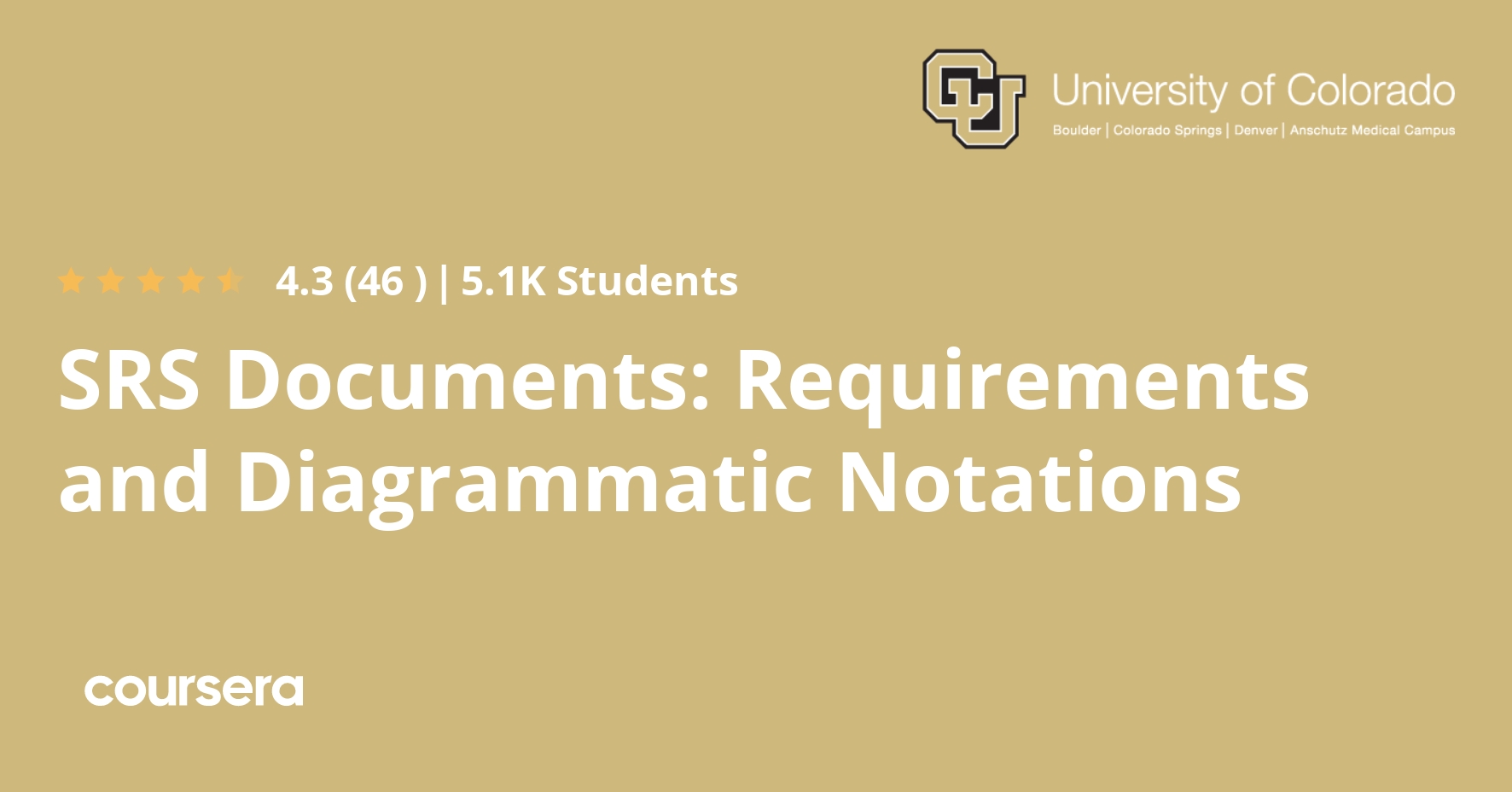Description
As requirements are being gathered and prioritized, they also need to be documented. In Diagrammatic Notations and Software Requirements Specification Writing, we discuss and practice the process of turning requirements into something readable to the customers at a high level, and the developers. When a designer or developer reads your document, they should be able to understand the overall idea, the scope, the domain, the resources, the expectations, and why alternative choices are not selected. To create a document in this way, you use a balance between storytelling (with pictures!) and complex diagrams.
What you will learn
Beginning to Write an SRS Document
Beginning to write a Software Requirements Specification (SRS) is a daunting process. As you start elicitation and move onward through the requirements cycle, you should plan your approach and begin writing as soon as possible. In this module, we discuss local and global rules that should be followed to lead to success.
Beginning Diagramming
Within a requirements document, you should tell a story. Pictures help in stories! In this lesson, we’ll look into some of the “pictures” that you can create to clarify understanding for all readers and to help yourself know that all points are being covered clearly and completely. Specifically, we’ll consider high, system-scope diagrams.
Lower-Level Diagramming
At a lower level, Entity Relationship Diagrams, Data Flow Diagrams, and SADT diagrams can be used. All three sets of diagrams work together to explain lower-level relationships and dataflow for components in the system-to-be. In this lesson, we’ll discuss what these diagrams look like and what information should be included in such diagrams.
Tracing Events
System level diagram and low level diagrams work together. Each low level diagram also relates to other low level diagrams. In addition to these diagrams, we also have diagrams to explain events.








